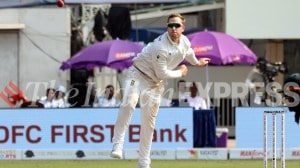Govt raises concern over growing offshore share in rupee and Nifty
Outlook for onshore trading is hampered by policy problems, the survey said.
The government has expressed concern over the emergence offshore markets with a significant rise in market shares in the Nifty and the rupee as the outlook for onshore is being hampered by policy problems. The Economic Survey also pitched for the development of “the bond-currency derivative (BCD) nexus to equity market quality levels”.
“India has lost competitiveness in key markets,” the Survey said. The two biggest markets in India are the rupee and Nifty. In both these markets, active trading has developed at overseas venues. Foreign customers have the choice of sending an order to India or elsewhere; households and firms in India are gradually finding ways of harnessing overseas choices.
The daily activity in the rupee adds up to $50.58 billion. The overseas market has developed into a significant competitor accounting for $1.4 billion exchange traded and $17.6 billion in OTC business. In the case of Nifty, more than half of the open position is now overseas. Offshore OTC business in Nifty was $22.8 billion.
“Ten years ago, the global market was practically absent in both these fields. The rise in market share of the overseas market is a major external impulse upon the Indian financial system,” the Survey said.
However, the outlook for onshore trading is hampered by policy problems, the survey said. “The outcome of this global competition hinges on six factors: there are capital control frictions against foreign investors; often there are technical mistakes in rules on position limits and margins; there is adverse tax treatment of non-resident participants; markets in India are not open at all hours; there are bureaucratic and procedural overheads; and the domestic market is less well developed than some competing markets,” it said.





- 01
- 02
- 03
- 04
- 05


























